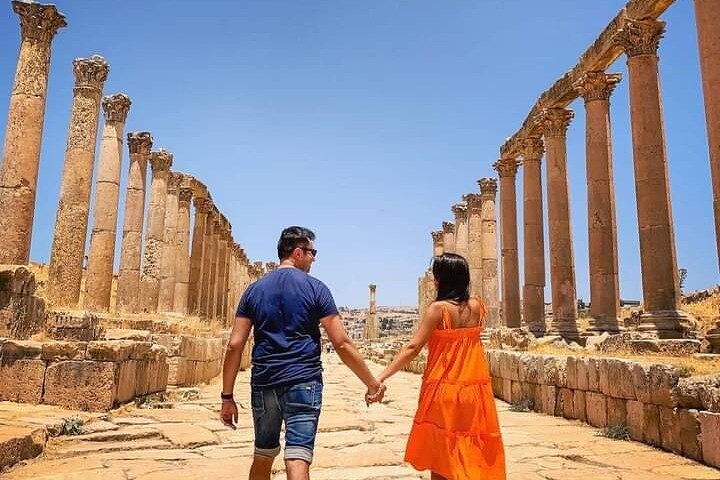A Spiritual Pilgrimage Through Northern Jordan’s Timeless Treasures
Embark on a spiritual journey through northern Jordan as I explore the ancient ruins of Jerash, the medieval fortress of Ajloun, and the cultural crossroads of Umm Qais. Discover the rich history and enduring legacy of these remarkable sites.
A Journey Through Time: The Ancient City of Jerash
As I stepped into the ancient city of Jerash, I felt as though I had been transported back in time. The air was thick with history, and the stones beneath my feet whispered tales of a bygone era. Known as the “Pompeii of the East,” Jerash is a testament to the grandeur of Imperial Rome, and its well-preserved ruins offer a glimpse into a world that once thrived with life and culture.
The Oval Colonnade, with its majestic columns standing in silent reverence, was a sight to behold. As I walked along the colonnaded main street, I could almost hear the echoes of merchants and citizens going about their daily lives. The temples, with their intricate carvings and imposing structures, spoke of a time when gods and goddesses were revered and worshipped.
For someone like me, who has spent years studying the rich tapestry of Middle Eastern history, Jerash was more than just a collection of ruins. It was a living, breathing entity that connected me to the past, allowing me to walk in the footsteps of those who came before. The experience was both humbling and enlightening, a reminder of the enduring legacy of human civilization.
The Fortress of Ajloun: A Testament to Arab Military Prowess
Leaving Jerash, I made my way to the town of Ajloun, where the imposing fortress of Ajloun Castle awaited. Built by the forces of Saladin in the 12th century, this castle stands as one of the best-preserved examples of medieval Arab military architecture in the Middle East.
As I explored the castle’s labyrinthine corridors and towering battlements, I was struck by the ingenuity and skill of its builders. The fortress was designed to protect the region from Crusader invasions, and its strategic location offered breathtaking views of the Jordan Valley.
Standing atop the castle, gazing out over the lush landscape, I felt a profound connection to the history and heritage of the region. The castle was not just a relic of the past; it was a symbol of resilience and strength, a reminder of the enduring spirit of the people who once called this land home.
Umm Qais: A Meeting of Cultures
The final stop on my journey was the ancient city of Umm Qais, another Greco-Roman marvel. Perched on a hilltop, the city offered panoramic views of the Sea of Galilee and the Golan Heights, a breathtaking backdrop to a place steeped in history.
Walking through the ruins, I was struck by the fusion of cultures that had shaped this city. Greek, Roman, and Byzantine influences were evident in the architecture and layout, a testament to the city’s role as a crossroads of civilizations.
As I stood amidst the ruins, I reflected on the interconnectedness of our world, the way in which cultures and peoples have influenced and enriched one another throughout history. My journey through Jerash, Ajloun, and Umm Qais was not just a physical exploration, but a spiritual one, a pilgrimage that deepened my understanding of the region’s rich and diverse heritage.
In the end, my trip to northern Jordan was more than just a visit to historical sites; it was a journey of discovery and reflection, a chance to connect with the past and find meaning in the present. I left with a renewed sense of wonder and appreciation for the enduring legacy of human civilization, and a desire to continue exploring the rich tapestry of history that binds us all together.








































